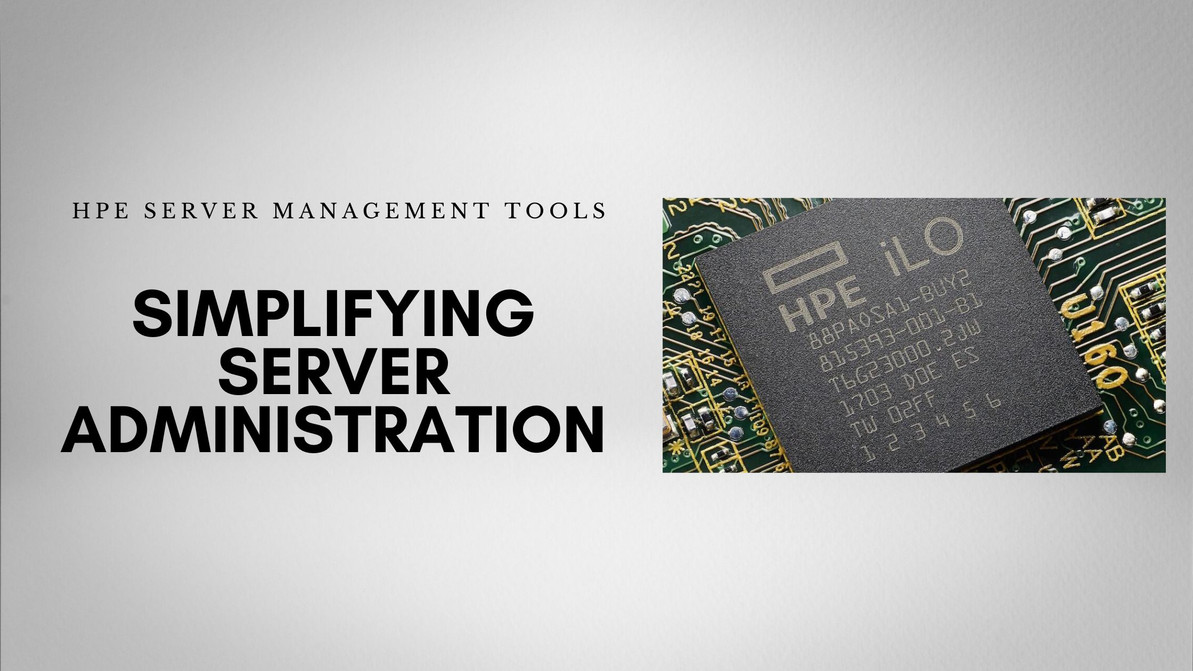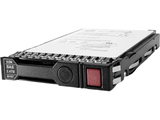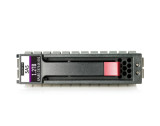HPE Server Management Tools: Simplifying Server Administration
Introduction
Effective server administration is a critical component of maintaining a smooth and reliable IT infrastructure. It involves tasks such as monitoring server health, applying updates, managing resources, and troubleshooting issues. To streamline these processes, Hewlett Packard Enterprise (HPE) offers a suite of server management tools designed to simplify server administration and enhance overall operational efficiency. In this article, we'll explore these tools, their capabilities, and their role in making server administration more manageable.
HPE iLO (Integrated Lights-Out)
Overview of iLO Functionality: HPE Integrated Lights-Out (iLO) is a powerful management tool that provides remote management capabilities for HPE servers. It offers features such as remote console access, virtual media support, and power management. With iLO, administrators can perform critical server tasks from anywhere, reducing the need for physical access to servers.
Remote Server Management Capabilities: iLO enables administrators to remotely control servers, including power cycling, accessing the BIOS, and viewing the server's graphical console. This remote accessibility simplifies tasks like troubleshooting, configuration changes, and system maintenance.
iLO Security Features: Security is paramount in server administration. iLO offers robust security features, including encryption, secure authentication, and role-based access control. These features help protect servers from unauthorized access and ensure the confidentiality and integrity of server management.
HPE OneView
Introduction to HPE OneView: HPE OneView is a comprehensive infrastructure management platform that simplifies server administration by providing a unified view of the entire infrastructure. It streamlines server provisioning, monitoring, and automation, reducing the complexity of infrastructure management.
Unified Server Management and Automation: OneView allows administrators to manage servers, storage, and networking resources through a single, intuitive interface. Automation capabilities enable administrators to create templates for server configurations and automate repetitive tasks, leading to increased efficiency.
Streamlining Infrastructure Tasks: With OneView, tasks such as firmware updates, resource allocation, and workload optimization become more efficient. The platform provides real-time insights into server health and performance, helping administrators proactively address issues before they impact operations.
HPE Systems Insight Manager (SIM)
Comprehensive Server Management: HPE Systems Insight Manager (SIM) is a versatile tool that offers comprehensive server management capabilities. It provides monitoring, alerting, and reporting features to ensure the health and performance of servers in your infrastructure.
Monitoring and Alerting Capabilities: SIM continuously monitors server hardware components, tracking metrics such as temperature, fan speed, and power usage. It generates alerts for anomalies or potential issues, allowing administrators to take proactive measures.
Proactive Server Maintenance: SIM facilitates proactive maintenance by providing insights into server hardware health. Administrators can schedule firmware and driver updates to keep servers up to date, reducing the risk of vulnerabilities and improving stability.
HPE Intelligent Provisioning
Simplifying Server Setup and Deployment: HPE Intelligent Provisioning simplifies the initial setup and deployment of HPE servers. It guides administrators through the configuration process, ensuring that servers are properly configured from the start.
Automated Firmware Updates: Intelligent Provisioning automates firmware updates, helping administrators stay current with the latest releases. This automation reduces the risk of manual errors and ensures that servers run with optimal performance and security.
Enhanced Server Provisioning: The tool streamlines server provisioning by allowing administrators to create custom server profiles. These profiles can be reused for consistent server deployments, saving time and ensuring standardization.
HPE Smart Update Manager (SUM)
Ensuring Firmware and Software Consistency: HPE Smart Update Manager (SUM) is a critical tool for maintaining firmware and software consistency across server infrastructure. It checks for updates and simplifies the process of applying them.
Automated Update Processes: SUM automates the update process, reducing the time and effort required to keep servers up to date. Administrators can schedule updates during maintenance windows to minimize downtime.
Minimizing Downtime: SUM minimizes downtime by orchestrating updates in a way that optimizes server availability. It allows administrators to stage updates and perform them in a sequence that ensures minimal disruptions to operations.
HPE Server Administrator
Real-Time Server Health Monitoring: HPE Server Administrator provides real-time monitoring of server health and performance. It offers insights into hardware components, ensuring administrators can quickly identify and address issues.
Managing System Resources: Server Administrator allows for efficient resource management, including RAID configuration, disk management, and system diagnostics. Administrators can optimize resource allocation to meet specific workload requirements.
Troubleshooting Server Issues: When issues arise, Server Administrator provides valuable diagnostic information. Administrators can use this data to troubleshoot and resolve server problems, reducing downtime and service interruptions.
HPE InfoSight
Predictive Analytics for Server Infrastructure: HPE InfoSight is an advanced tool that leverages predictive analytics to monitor and manage server infrastructure. It uses AI-driven insights to anticipate potential issues and recommend actions.
AI-Driven Insights and Recommendations: InfoSight continuously collects data from servers and uses AI algorithms to identify trends and patterns. It provides administrators with proactive recommendations to optimize server performance and reliability.
Improving Server Performance and Reliability: By harnessing the power of AI and predictive analytics, InfoSight helps administrators make data-driven decisions that enhance server performance and reliability. It's a valuable tool for organizations seeking to maximize server uptime.
HPE Insight Remote Support
Remote Monitoring and Issue Detection: HPE Insight Remote Support offers remote monitoring capabilities, allowing administrators to detect and diagnose server issues from a centralized location. It provides real-time visibility into the health of server infrastructure.
Proactive Support and Issue Resolution: Insight Remote Support enables proactive support by automatically detecting issues and generating support cases with HPE. This proactive approach reduces downtime and accelerates issue resolution.
Reducing Downtime and Disruptions: By swiftly identifying and addressing potential problems, Insight Remote Support helps organizations reduce downtime and minimize disruptions to business operations. It's a valuable asset for maintaining server availability.
HPE ProLiant Gen10 Servers
Integration of Management Tools: HPE ProLiant Gen10 servers are designed with seamless integration of management tools in mind. These servers are equipped to take full advantage of HPE's server management solutions, enhancing their effectiveness.
Enhancing Server Security: Gen10 servers benefit from the security features of HPE's management tools, ensuring that servers are protected against unauthorized access and cyber threats.
Streamlining Server Administration Tasks: With Gen10 servers, server administration tasks become more streamlined and efficient, thanks to the integration of HPE's management solutions. This results in improved overall server performance.
Best Practices for Using HPE Server Management Tools
Establishing a Proactive Management Strategy: Implementing a proactive management strategy is essential for optimizing server administration. Administrators should regularly review server health and performance data to identify and address potential issues before they become critical.
Regularly Updating Firmware and Software: Keeping server firmware and software up to date is crucial for security and performance. Administrators should establish a schedule for regular updates and ensure that critical security patches are applied promptly.
Monitoring Server Health and Performance: Continuous monitoring of server health and performance provides valuable insights. Administrators should utilize the data provided by management tools to make informed decisions and adjustments as needed.
Case Studies: Real-World Benefits of HPE Server Management Tools
Success Stories Showcasing Improved Server Administration: Real-world case studies demonstrate the tangible benefits of implementing HPE server management tools. These success stories highlight increased efficiency, reduced operational costs, and enhanced server reliability.
Enhanced Efficiency and Reduced Operational Costs: Organizations that have embraced HPE's server management solutions have experienced significant improvements in efficiency. This has translated into reduced operational costs and improved resource utilization.
Future Trends in Server Management
Evolving Technologies in Server Administration: The field of server management is continually evolving. Administrators should stay informed about emerging technologies, such as AI-driven automation and predictive analytics, which are shaping the future of server administration.
HPE's Contributions to the Future of Server Management: HPE continues to lead the way in innovating server management tools. Administrators can expect ongoing advancements and improvements in HPE's offerings, further simplifying server administration tasks.
Challenges and Solutions
Common Server Management Challenges: Server administrators often face challenges such as complex infrastructure, security threats, and the need for seamless integration. These challenges can impact the efficiency of server administration.
How HPE Tools Address These Challenges: HPE server management tools are designed to address these challenges head-on. They provide solutions that simplify complex tasks, enhance security, and promote integration, ultimately making server administration more manageable.
Conclusion
In a world where IT infrastructure plays a pivotal role in business operations, the simplification of server administration is of paramount importance. HPE's suite of server management tools, including iLO, OneView, SIM, Intelligent Provisioning, SUM, Server Administrator, InfoSight, and Insight Remote Support, empowers organizations to streamline server administration tasks, enhance performance, and proactively address issues. By adhering to best practices and leveraging these tools, administrators can ensure that their server infrastructure operates smoothly, efficiently, and securely, paving the way for business success. Explore the possibilities of HPE server management tools and unlock the potential of your server infrastructure.
Recent Posts
-
Unleashing Enterprise Performance: The HPE 2.4TB 10K RPM SAS Drive for ProLiant Servers
In the ever-evolving landscape of enterprise IT infrastructure, the demand for robust, high-performa …Jan 12th 2025 -
Unleashing Enterprise Potential: The HPE 8TB SAS-12Gbps Smart Carrier Drive for ProLiant Servers
The HPE 8TB 7200RPM 3.5-inch Large Form Factor (LFF) Midline Hard Drive is a highly reliable and hig …Jan 11th 2025 -
Powering Performance: The HPE 1.2TB SAS-12Gbps Enterprise Drive for Smart Array SANs
The HPE 1.2TB 10,000RPM 2.5-inch Small Form Factor (SFF) Dual Port SAS-12Gbps Enterprise Hard Drive …Jan 10th 2025




